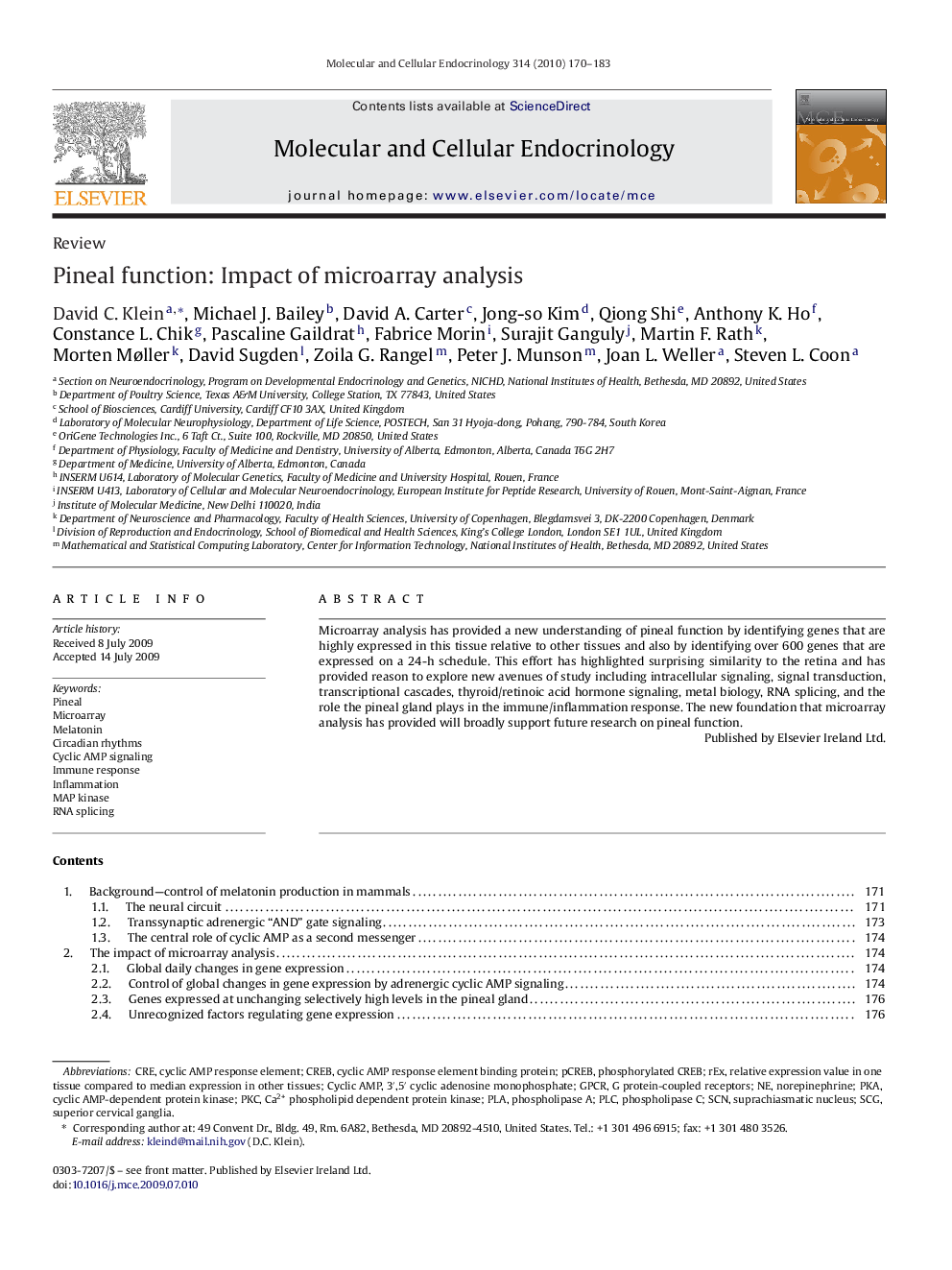| Article ID | Journal | Published Year | Pages | File Type |
|---|---|---|---|---|
| 2197108 | Molecular and Cellular Endocrinology | 2010 | 14 Pages |
Abstract
Microarray analysis has provided a new understanding of pineal function by identifying genes that are highly expressed in this tissue relative to other tissues and also by identifying over 600 genes that are expressed on a 24-h schedule. This effort has highlighted surprising similarity to the retina and has provided reason to explore new avenues of study including intracellular signaling, signal transduction, transcriptional cascades, thyroid/retinoic acid hormone signaling, metal biology, RNA splicing, and the role the pineal gland plays in the immune/inflammation response. The new foundation that microarray analysis has provided will broadly support future research on pineal function.
Keywords
Related Topics
Life Sciences
Biochemistry, Genetics and Molecular Biology
Cell Biology
Authors
David C. Klein, Michael J. Bailey, David A. Carter, Jong-so Kim, Qiong Shi, Anthony K. Ho, Constance L. Chik, Pascaline Gaildrat, Fabrice Morin, Surajit Ganguly, Martin F. Rath, Morten Møller, David Sugden, Zoila G. Rangel, Peter J. Munson,
